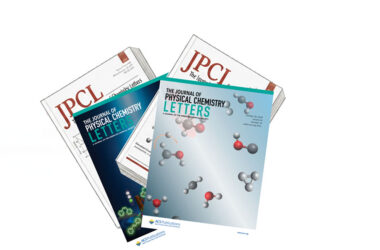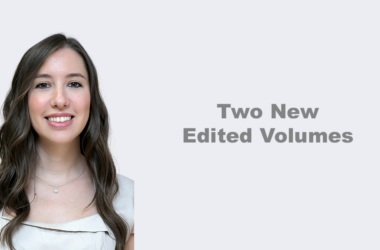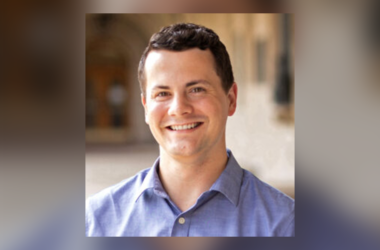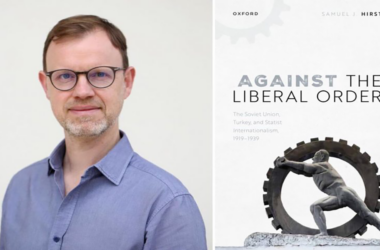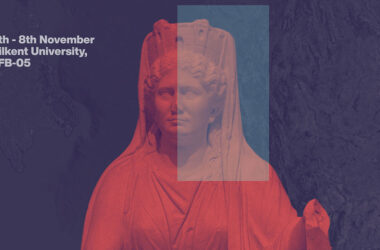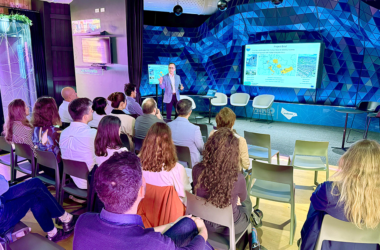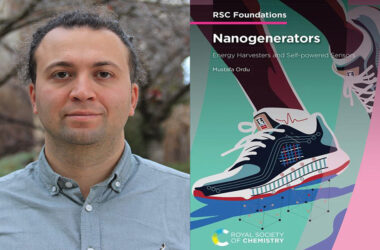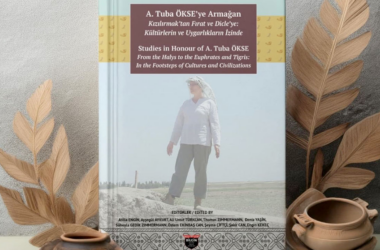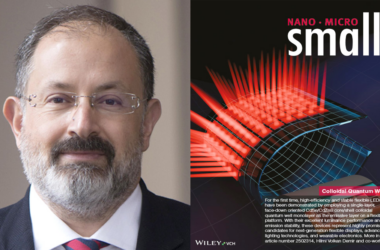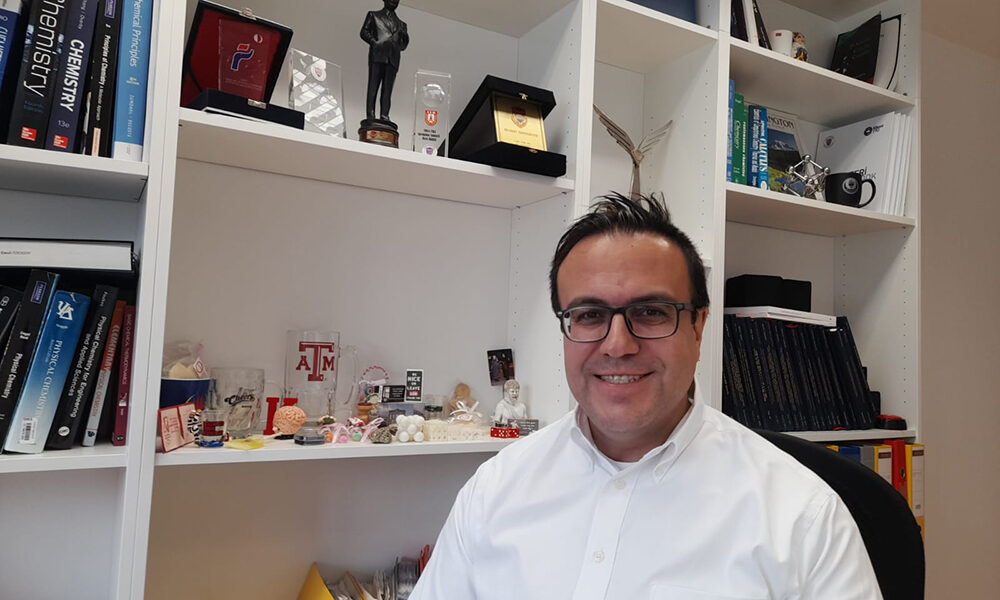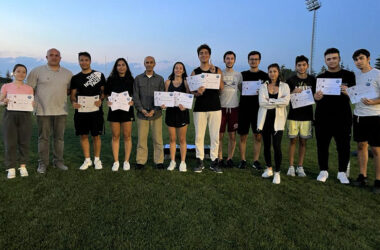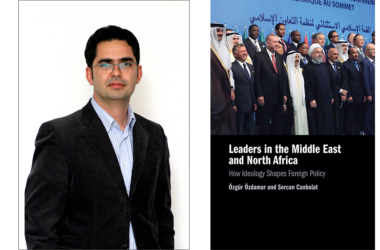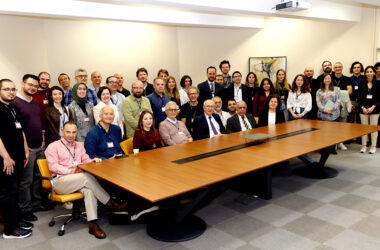BY PELİN SU UZUNCAGİL (AMER/III)
Emrah Özensoy is a professor and the chair of the Department of Chemistry. He got his BS from Bilkent in Chemistry in 1999 and his PhD from Texas A&M University in Chemistry in 2004. He did his post-doctoral research at Pacific Northwest National Laboratory. He has been teaching at Bilkent since 2006. He has won scientific awards, and he serves as a Bilkent Executive Board Member and SESAME International Synchrotron Facility Scientific Advisory Committee Member.
Why did you choose an academic career? What do you like the most about being at Bilkent?
In the 1990s, the Bilkent Chemistry Department was the best chemistry program in the nation. This is why I chose to get my BS from Bilkent, and looking back, I was not wrong in my decision. The education here is internationally top notch. I have never had a problem competing anywhere in the world.
What projects are you working on currently?
We have multiple research projects and our group focuses on different topics. One of them is “valorization of renewals.” There is a saying, “One man’s trash is another man’s treasure.” We are trying to convert trash, poisons and pollutants into valuable chemicals. For example, there are things called bio-mass products that come from the remains of plants and have very little financial and industrial value. By using chemistry and catalysis, we convert this bio-mass into fuels and other valuable chemicals for industry.
In another project, we are trying to convert air pollution into useful chemicals. Carbon dioxide is a greenhouse gas. It makes the atmosphere warmer. Carbon dioxide in the atmosphere increases the temperature of the atmosphere and oceans, which in turn leads to melting the Arctic ice caps as well as other environmental problems. Thus, if we can convert carbon dioxide into valuable chemical products, ethanol or other useful industrial gasses like syngas (i.e., CO + H2), it would be a win-win situation. These chemicals also have a significant economic value.
What’s your best work?
Probably, at the end of the day, what matters is what other people value as my best work. The work that I did during my PhD was cool. It was about understanding catalytic reactions at the atomic level. Recently, we have also done some interesting work to image the catalytic nanoparticles at unprecedentedly high resolutions using a new nano-microscopy technique called scanning near field optical microscopy (i.e., SNOM) and overcome a 150 year-old theoretical resolution limit in optics called Abbe’s diffraction limit. That was fun.
What excites you about your work? What’s the coolest thing about your work?
What we do –that is surface chemistry and catalysis– is, interdisciplinary. From one perspective, it is fundamental science and it is academically very enjoyable. But the most fun part is that, when we do research, the implications are relevant for industry, which means we can collaborate with industry. We work with chemists, physicists, chemical engineers, material scientists, petroleum engineers and companies, but we can also work with theoretical physicists. We start with quantum mechanics and sometimes get the chance to work all the way down to the final product. Being able to work with these fields is really cool.
Could you share a turning point or defining moment in your career?
The interesting part of my work is that I started with basic and fundamental science that was far from the applied research. My PhD was so fundamental that I never thought that it could be coupled with any industrial work. Then, we cooperated with General Motors in the US and Roketsan, Aselsan and AKKim in Turkey and they funded our research group at Bilkent to do some collaborative work. I understood that fundamental science has a real value in industry, and this was exciting.
What’s one piece of information from your field that you think everyone should know?
Chemistry is what you are born with, live with and die with. You wear, eat, use and touch chemicals even when you don’t know it. Without chemistry, we wouldn’t have the microelectronics revolution, we wouldn’t have the Big Mac, the iPhone, Tesla or even chocolate! Chemistry is at the heart of consumer society. Internationally, chemistry is known as the central science because it is in the heart of numerous technologies. Chemists know how to use molecules and atoms; and molecules and atoms are practically everywhere. This is also why we are offering a campus-wide course named CHEM 111 (Chemistry for the Planet and the Society). It is a non-technical capstone course that is suitable for all majors.
When and where do you do your best thinking?
When I am alone, focusing on a subject for long durations of time without interruptions.
What distracts you?
Interruptions that are irrelevant to whatever I am working on.
What are you most curious about?
I have some popular science curiosities like Quantum mechanics and AI. Now it is perfectly clear that AI has/will have many unprecedented implications, offering revolutionary tools and opportunities in many fields, including chemistry. I am also interested in arts, paintings and music. My research-related curiosities focus on how to make this planet more sustainable and how we can use our finite energy resources in a better, smarter and more responsible way by converting waste material into value-added chemicals and distributing this produced value to more people with better options.
What’s the most common misconception about your work?
The general misconception about chemistry and chemicals is that they are “bad.” When a guy on the street says “chemistry,” most people picture factory chimneys emitting toxic smoke, dying birds dipped in petroleum, plastic mountains piling up in the ocean, sea turtles eating plastic, etc. But people don’t know how much “good” chemistry plays a role in their everyday lives, from their cellphones to their coffee.
What do you like to do when you’re not working?
I have three daughters, so when I am not working, I am mostly with my family and my wife. I also really like traveling, museums, photography and music.
Which books have influenced you the most, and why?
There is a book called “Thinking: Fast and Slow” by Daniel Kahneman. It is a book written by a Nobel laurate in economics and it is about how people think. It is an eye-opening book. Currently, I am reading “The Character of the Physical Law” by Richard Feynman.
If you weren’t an academician, what career would you choose?
Art historian. I would like to do archaeometry work, which means taking a painting or piece or art and analyzing its chemical structure with different techniques. We could find out what kind of colors Van Gogh used, which part of the Netherlands he was getting his dyes from and so on. I have actually received an invitation from the Bilkent history department to pursue a PhD in history after my graduation from Bilkent Chemistry B.S. program, but I had to decline. Even though I love history, I love chemistry more.
What’s the secret to leading a happy life?
Happy wife = Happy life!
If you could go back to your graduate/undergraduate student years, what advice would you give your younger self.
I think it is a good idea to be a Renaissance man and try to learn as many different things as possible. Don’t be prejudiced about the fields that are unknown to you. If you are a Chemist, you may also need to know some Economics, literature, music, electronics, computer programming, etc.Because you don’t know where your inspiration will come from or where you may apply your science 20 years down the road. Being an undergraduate could be a great opportunity to learn these things because later on in your career, you might have much less time to dig into them.x”
